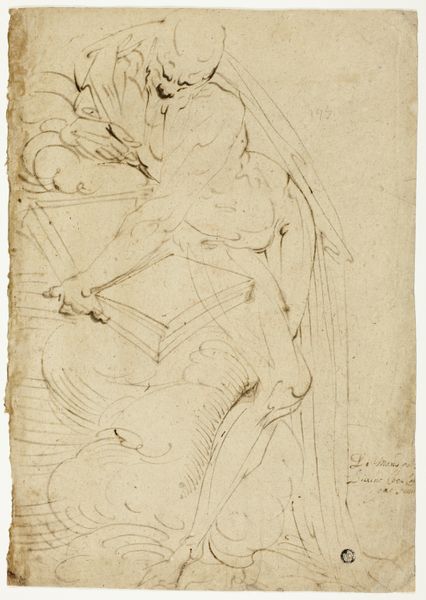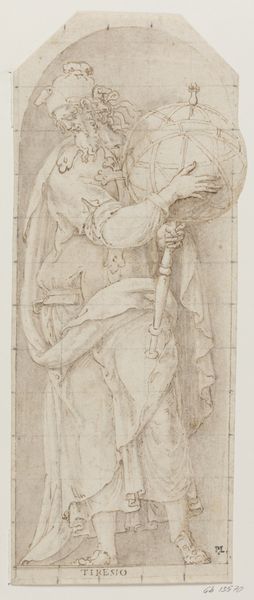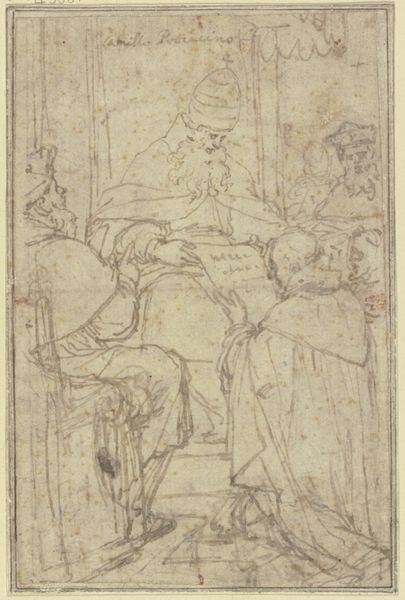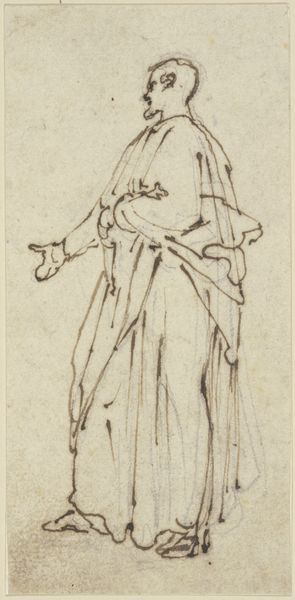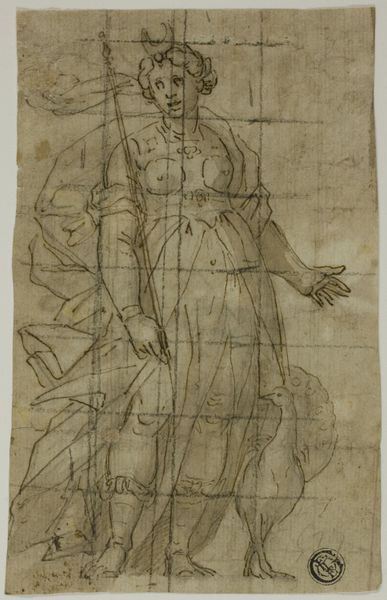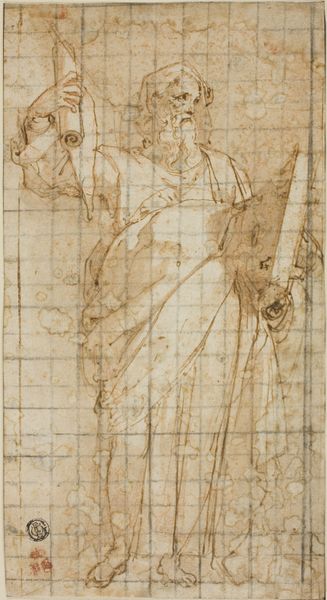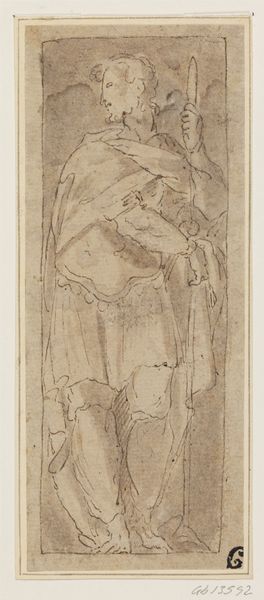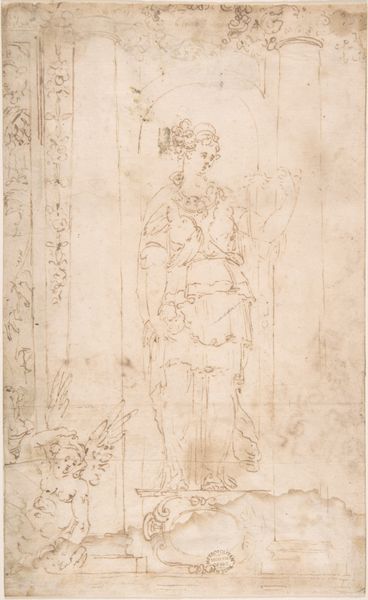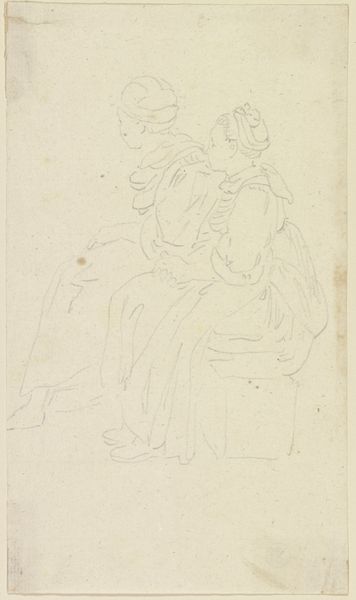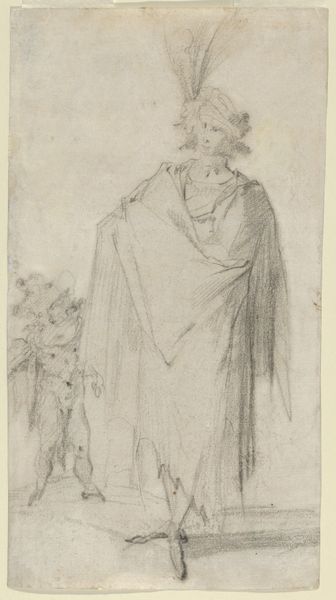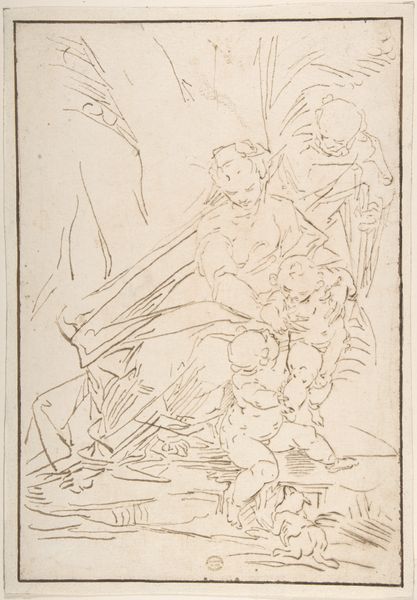
A woman with a scroll in her left hand and a trowel in her right leaning to a celestial globe 1548 - 1608
0:00
0:00
drawing, pencil
#
portrait
#
drawing
#
etching
#
charcoal drawing
#
figuration
#
form
#
11_renaissance
#
pencil
Dimensions: 235 mm (height) x 94 mm (width) (bladmaal)
Curator: Let's turn our attention to this delicate drawing, “A woman with a scroll in her left hand and a trowel in her right leaning to a celestial globe," attributed to Ippolito Andreasi, dating from between 1548 and 1608. Editor: There's an immediate sense of tentative inquiry that this image evokes; she looks contemplative and hesitant, doesn’t she? It’s interesting seeing it sketched out, all the bare strokes are really laid out. Curator: The grid marks are interesting to observe; it suggests Andreasi meticulously planned the composition. I suspect it was perhaps meant for a larger work or fresco. The female figure holds symbolic implements offering an allegorical subject, where architecture, embodied by the trowel, literally provides structure for scientific discovery as symbolized by the scroll, both set upon knowledge and fate. Editor: Yes, I agree. Given the Renaissance context, it speaks volumes about the intersection of science, art, and power. The woman herself is intriguing; her somewhat androgenous portrayal disrupts rigid gender binaries within the period while possibly hinting at her power as someone versed in the practice and science of architectural construction. This also suggests patronage: perhaps a woman who wanted to communicate and share what was important to her at this time, science and creation. Curator: The Renaissance humanists were intensely interested in classical learning, as evidenced in her holding the scroll. Architectural innovation was spurred by the rediscovery of classical forms, so that positioning would certainly appeal to a learned contemporary audience. This symbolic arrangement conveys Renaissance ideals of learning. Editor: It would be fascinating to see the broader impact this work might have had. Could its representation of female engagement with both architecture and scholarly pursuits possibly challenge contemporary perceptions and norms of feminine education and involvement? Curator: It certainly prompts reflection. These works allow us to better see and understand how values are formed and preserved within social history. Editor: Yes. These artifacts help create more thoughtful analysis about what remains of our heritage today, and I want to be respectful of its relevance.
Comments
No comments
Be the first to comment and join the conversation on the ultimate creative platform.
